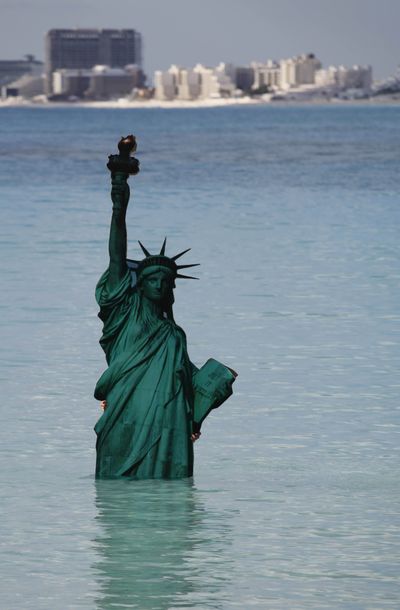U.S. is likely to approve oil pipeline from Canada

WASHINGTON – At the climate talks under way in Cancun, Mexico, the U.S. has assured the world it’s not backing away from its pledge to reduce greenhouse gas emissions. At the same time, however, the State Department looks likely to approve a pipeline that would increase the use of one of the dirtiest forms of oil.
That oil would flow from Canada’s oil sands in Alberta, where the northern forest is cut so that giant trucks can scrape up black sand containing bitumen, an extra-heavy crude. The Environmental Protection Agency figures that bitumen requires so much energy to extract and refine that it produces 82 percent more greenhouse gas emissions than average U.S. crude from the time it’s mined until it ends up in a car’s gasoline tank.
Secretary of State Hillary Clinton said in October that she was inclined to approve the pipeline, known as Keystone XL.
The new pipeline would bring oil sands crude from Alberta through Saskatchewan, Montana, South Dakota, Nebraska, Kansas, Oklahoma and Texas, where it would end up in terminals on the Gulf Coast.
Environmentalists have opposed the oil sands for many reasons – air and water pollution, health risks, the loss of wetlands and forest, and an increase of heat-trapping emissions at a time when the world is trying to reduce them.
“It’s really a decision that runs counter to the U.S. building any trust here,” said National Wildlife Federation attorney Joe Mendelson in Cancun. The negotiations among 193 nations end Friday.
Nations agreed last year to try to keep average global temperature from rising more than 3.6 degrees Fahrenheit. The U.S. last year pledged to cut emissions by 17 percent by 2020 to get on the path of steeper cuts the world will need by 2050. Negotiator Todd Stern reaffirmed the pledge last week.
Canada is America’s No. 1 source of imported oil. The Department of Energy’s data show that the oil sands account for about half of Canada’s oil production and that production is expected to grow.